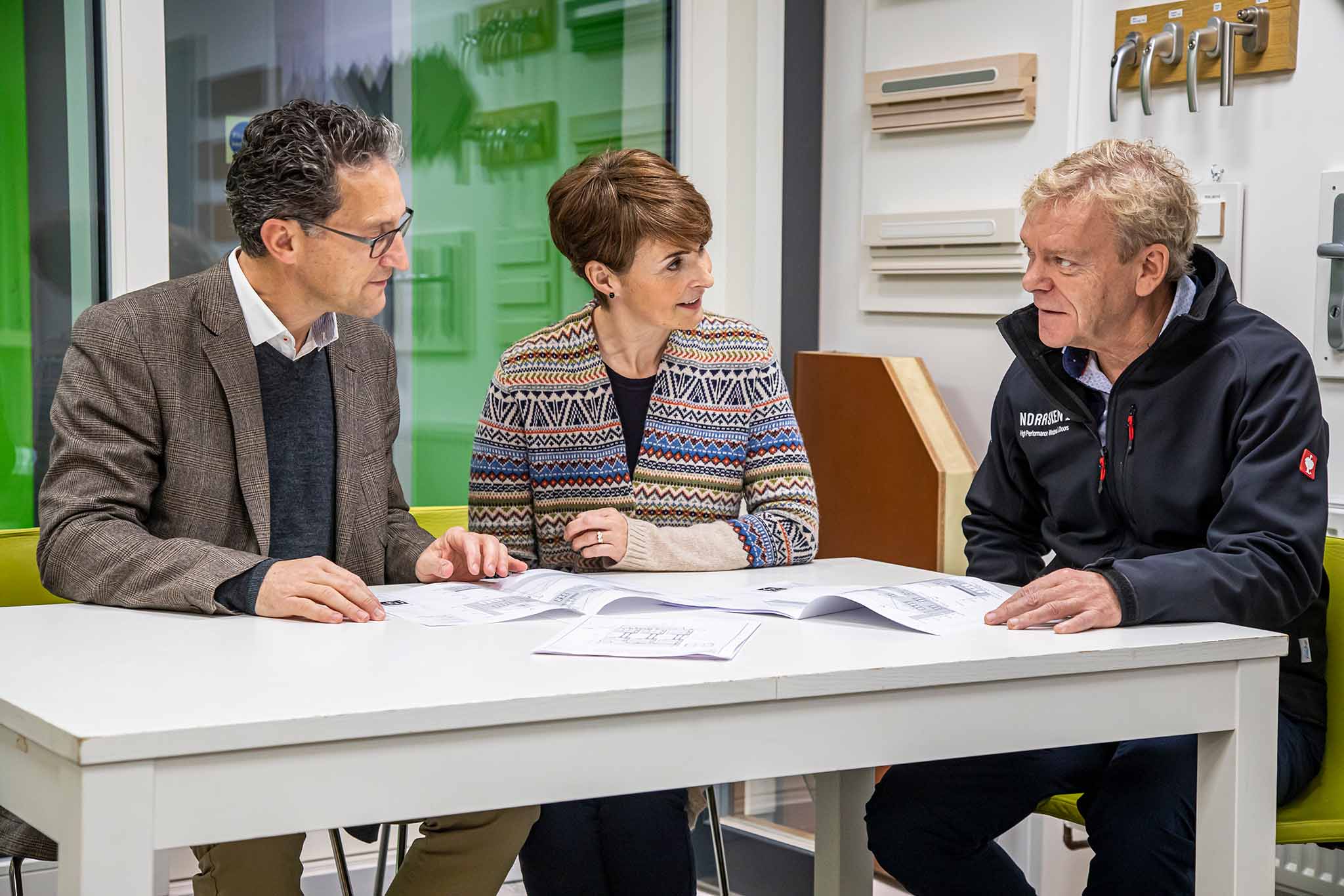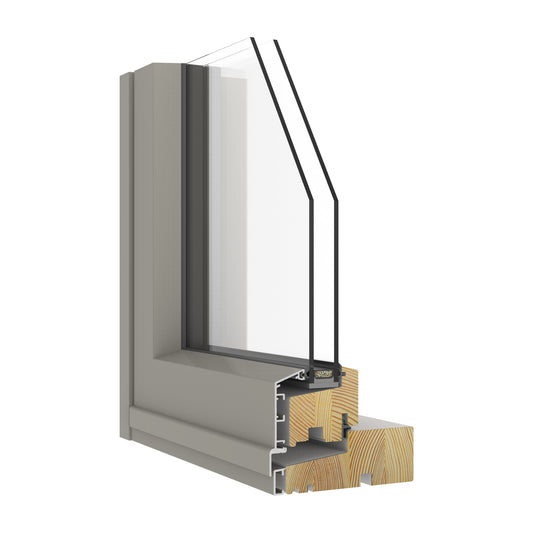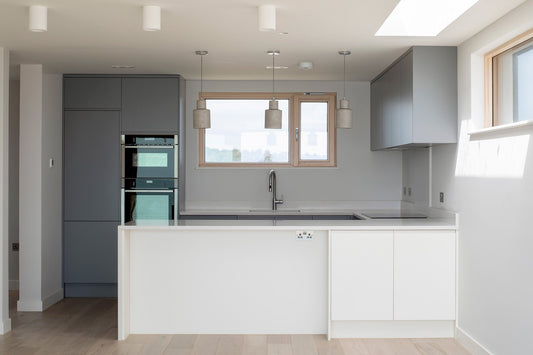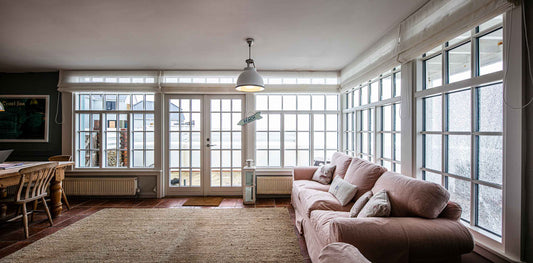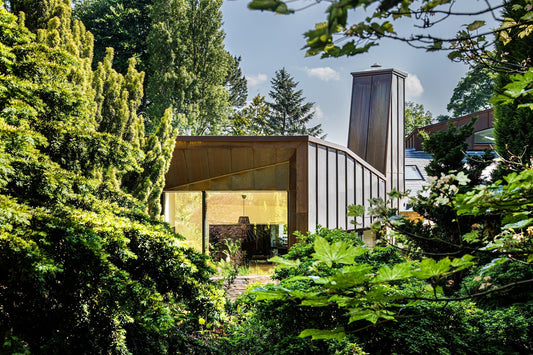Trickle Vents & Building Regulations Part F
When and why did the regulations change? What is Approved Document F?
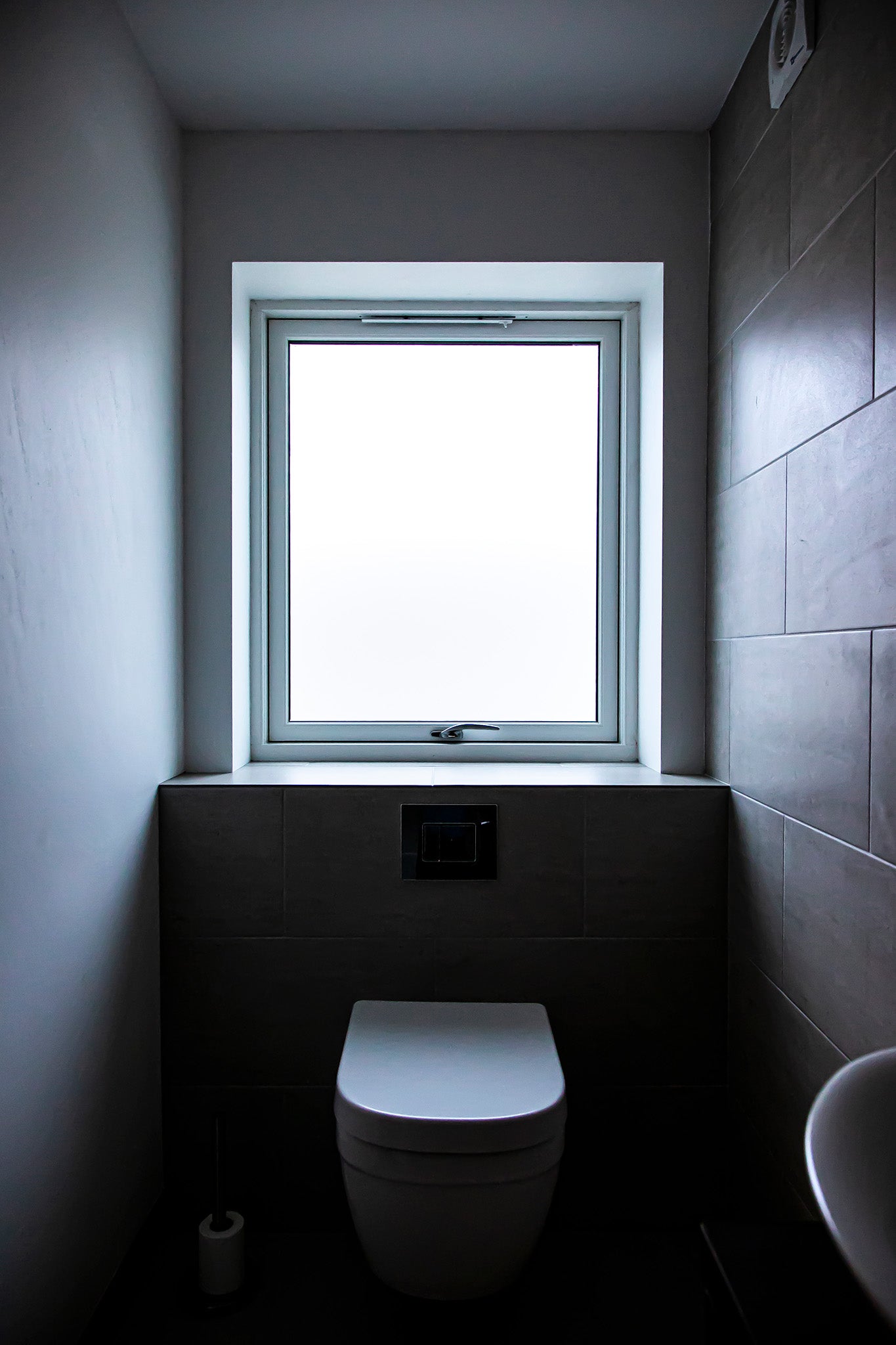
How are homes ventilated?
Buildings are ventilated in three primary ways.
Extraction ventilation
Extraction ventilation limits the spread of fumes, pollutants or vapours from one room to another in a building. Bathroom and kitchen extractor fans or air conditioning units are the most common domestic examples of this.Background ventilation provides a passive air supply.
Background ventilation
Background ventilation is the passive supply of external air into a room via ‘a small ventilation opening’. The idea is that fresh air is supplied even when the windows are closed and that there is ‘controllable whole building ventilation’. Background ventilation is provided by trickle vents or whole house ventilation systems.
Purge ventilation
Also sometimes called ‘rapid’ ventilation, purge ventilation is used intermittently to remove pollutants, smells or hot air from a room or the dwelling. It is usually achieved by simply opening a window or door - think of opening your windows to cool down a hot room in summer or to remove the smell and smoke of burnt toast.The new Part F requires a system for purge ventilation in every habitable room - either by openable windows and doors, or by means of a mechanical extract ventilation system (see below in this article). When windows are used for Purge ventilation, they should adhere to the minimum requirements in the table below.
Do I need trickle vents?
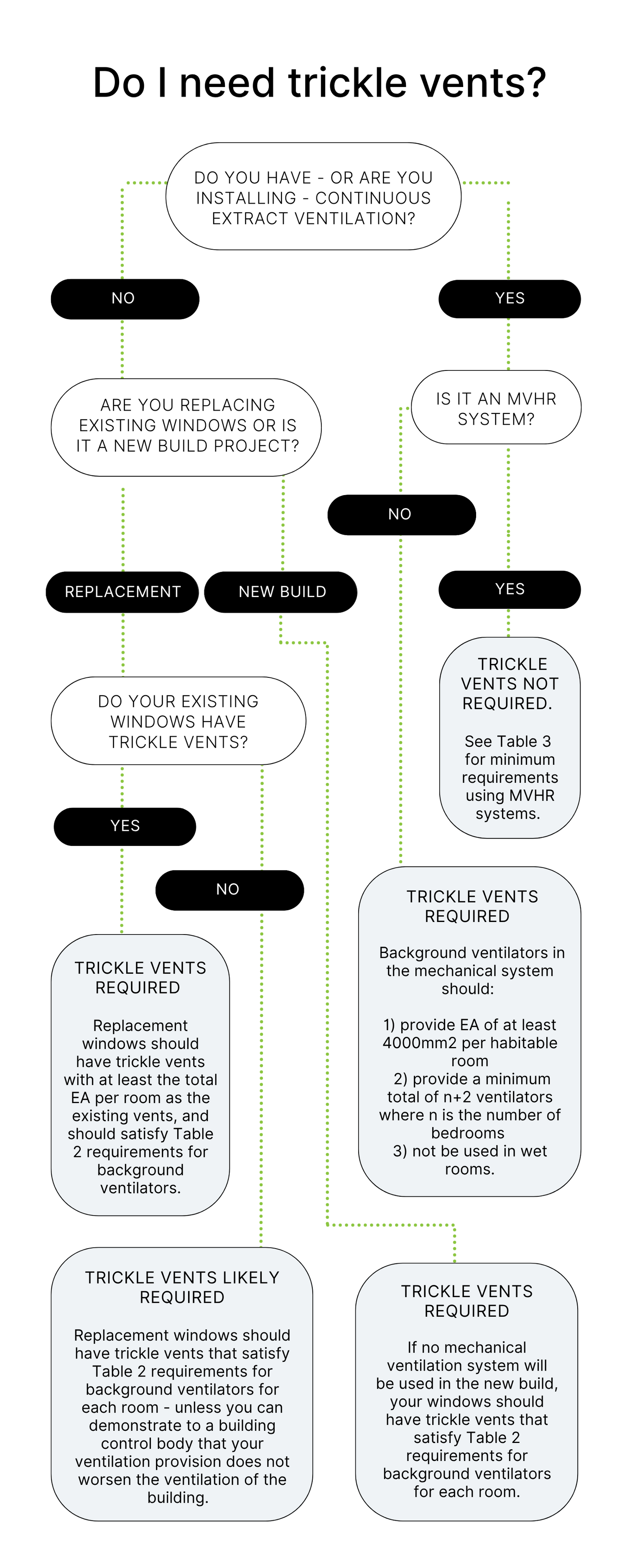
I'm replacing my windows, do I need trickle vents?
Previously, Part F did not require trickle vents in replacement windows where the former window did not have them. That has now changed.
Wherever work is carried out to a home that could affect its ventilation provision, minimum Equivalent Area requirements must be met regardless of whether the existing window had a trickle vent or not.
Existing windows with background ventilators
If your existing windows have background ventilators and you’re not installing MVHR, the replacement windows should include background ventilators.
The new background ventilators should comply with both of the following conditions.
- They shouldn’t be smaller than the background ventilators in the original window and the ventilation provision should not be worse than before the window was replaced.
- They should be controllable either automatically or by the occupant.
Not sure what the existing ventilation capacity is? Use Table 2 below as a guide to ventilation Equivalent Area requirements in the replacement windows.
Replacement windows should have trickle vents in most cases, unless MVHR is installed
Existing windows without background ventilators
Including trickle vents in every new window is not mandatory - but you are pretty likely to need them - unless you’re installing MVHR.Why? As mentioned earlier, replacing your windows is likely to make your home more airtight. If you’re not installing an MVHR system, then increased airtightness will reduce (beneficial) ventilation in your home. The building regulations require ventilation to be no worse than it was before the work was carried out and to meet EA requirements. This can be demonstrated in any of the following ways:
- Installing replacement windows with trickle vents that satisfy requirements in Table 2
- If the dwelling will have continuous mechanical extract ventilation, installing background ventilators according to requirements at the bottom of Table 2.
- Other ventilation provisions, if it can be demonstrated to a building control body that they comply with the Building Regulations for a whole dwelling via a combination of extract, whole dwelling and purge ventilation and do not worsen the ventilation of the building.
In practice, these EA requirements are likely to be more demanding than your existing ventilation provision, so you may end up needing to add trickle vents to openings that didn’t previously have them in order to meet minimum requirements.


